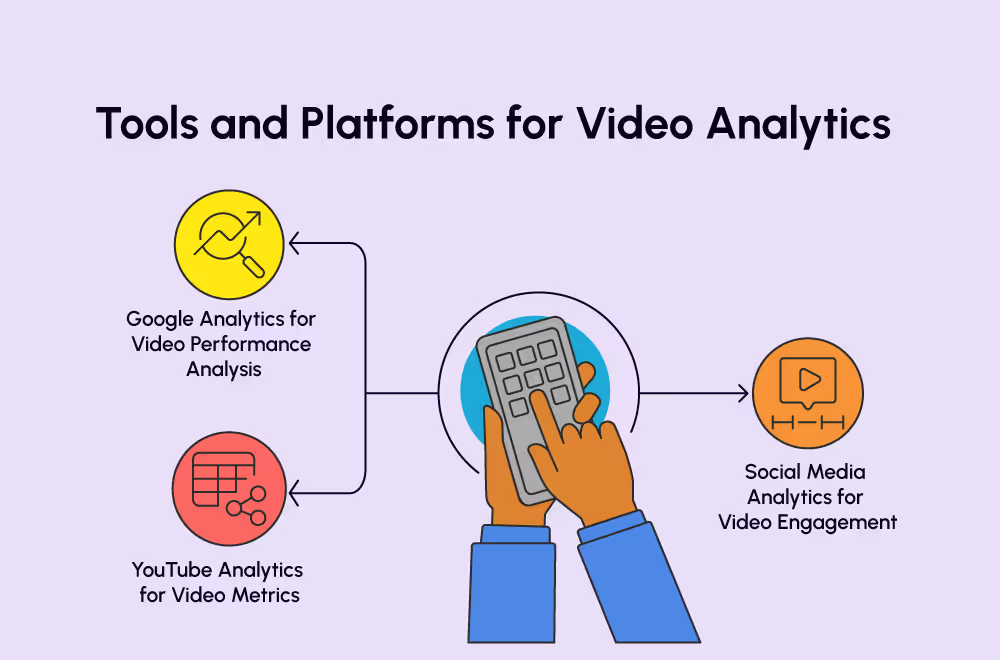Video Analytics: Measuring and Analyzing Performance Metrics for Success

Videos have become an integral part of marketing strategies, making it crucial to understand how they perform and how to improve their impact. By leveraging video analytics, you can gain valuable insights into viewer behavior, optimize your content, and maximize your return on investment (ROI).
Let's dive in!
The Importance of Video Analytics
Understanding the importance of video analytics is the first step toward harnessing its power. Here are a few key reasons why video analytics should be an essential component of your marketing strategy:

1. Data-driven Decision Making
Video analytics provides you with quantitative data on various performance metrics, empowering you to make informed decisions based on real-time insights rather than assumptions or guesswork.Whether you're a brand working with a video production company in Bangalore or managing in-house content, data-backed insights help streamline your creative direction
2. Audience Understanding
Video analytics provides a valuable window into your audience's behavior, demographics, and engagement patterns, allowing you to gain a better understanding of who they are and what they want. By harnessing this knowledge, you can tailor your content to effectively meet their preferences and needs.
3. Content Optimization
With video analytics, you have the power to optimize your content by identifying what works and what doesn't. Analyze key metrics to fine-tune your videos to enhance engagement, retention, and conversion rates, ultimately driving better results.
4. ROI Maximization
Video analytics enables you to measure the impact of your video content on your business goals. By tracking key performance metrics, you can assess the return on your investment and identify areas for improvement.
Key Performance Metrics for Video Analysis
To effectively measure and analyze your video performance, it's crucial to focus on key performance metrics. Let's explore some essential metrics to consider:

Engagement Metrics:
- View Count: The number of times your video has been viewed.
- Average View Duration: The average time viewers spend watching your video.
- Play Rate: The percentage of visitors who clicked play and started watching.
- Social Shares: The number of times your video has been shared on social media platforms.
Example: Analyzing the engagement metrics can help you identify popular videos with high view counts and long average view durations. You can leverage this information to create similar content that resonates with your audience.
Conversion Metrics
- Click-through Rate (CTR): The percentage of viewers who clicked on a call-to-action (CTA) or a specific link.
- Conversion Rate: The percentage of viewers who completed a desired action, such as making a purchase, signing up for a newsletter, or filling out a form.
Example: By tracking conversion metrics, you can determine the effectiveness of your CTAs and optimize them to improve your conversion rate. A higher conversion rate indicates that your video is successfully driving viewers to take the desired actions.
Retention Metrics
- Drop-off Points: Identifying the specific time in a video when viewers lose interest and stop watching.
- Completion Rate: The percentage of viewers who watch the entire video.
Example: Retention metrics provide insights into which parts of your video are captivating and which may need improvement. By analyzing drop-off points, you can optimize your content to maintain viewer engagement throughout the video.
Audience Insights
- Demographics: Information about your viewers' age, gender, location, and interests.
- Playback Locations: Where your videos are being watched (e.g., your website, YouTube, social media).
Example: Understanding your audience's demographics and playback locations can help you tailor your content to their preferences and optimize distribution channels.
For instance, if you find that most of your viewers are located in a specific region, you can create localized content to better resonate with them.
Tools and Platforms for Video Analytics
To leverage the power of video analytics, several tools and platforms are available. Here are a few popular options:

1. Google Analytics for Video Performance Analysis:
If you host your videos on YouTube, you can connect your YouTube channel to Google Analytics to track video performance, engagement, and conversions.
Example: With Google Analytics, you can access comprehensive reports on video metrics, including view count, average view duration, and conversion rates. These insights allow you to evaluate the effectiveness of your video marketing efforts.
2. YouTube Analytics for Video Metrics:
YouTube Analytics provides detailed metrics specific to your YouTube channel, including views, likes, comments, and audience retention.
By diving into YouTube Analytics, you can gain insights into which videos are driving the most engagement, identify the demographics of your viewers, and discover the traffic sources bringing viewers to your channel.
3. Social Media Analytics for Video Engagement
Various social media management tools offer analytics features that allow you to track video engagement metrics on platforms like Facebook, Instagram, Twitter, and LinkedIn.
Social media analytics tools provide valuable data on video reach, engagement, and audience demographics across different social platforms. By monitoring these metrics, you can refine your social media video strategy to maximize engagement and visibility.
Using Video Analytics to Optimize Performance
Now that you understand the importance of video analytics and the key metrics to track, let's explore how you can use this data to optimize your video performance:
1. A/B Testing and Video Analytics:
Example: By running A/B tests with different video thumbnails, titles, or CTAs and analyzing the resulting performance metrics, you can identify the elements that resonate most with your audience and make data-driven decisions for future video optimization.
2. Improving Video ROI with Analytics:
You can identify videos that generate the highest ROI by analyzing the correlation between video performance metrics and business goals. This information can be gathered by working with production houses in Delhi that provide content-creation strategies ensuring your video production efforts align with your business objectives.
Future Trends in Video Analytics
As technology advances, so does the field of video analytics. Here are some emerging trends to keep an eye on:
AI-powered Video Analytics: Artificial intelligence (AI) is revolutionizing video analytics by offering advanced capabilities such as automated video tagging, sentiment analysis, and personalized recommendations based on viewer preferences.
Interactive Video Analytics: Interactive videos allow viewers to make choices or engage with the content providing new opportunities for data collection and analysis. It enables marketers to gather insights into user preferences, engagement patterns, and decision-making processes.
Conclusion
Video analytics is a powerful tool for measuring and analyzing the performance metrics of your videos. You can optimize your video strategy and enhance your overall success by leveraging the insights obtained from engagement, conversion, retention metrics, and audience data.
Remember to utilize the available tools and platforms like Google Analytics, YouTube Analytics, and social media analytics to unlock the full potential of your video marketing efforts. Stay ahead of the curve by embracing future trends in video analytics, and watch your videos soar to new heights of performance and engagement.
Get in touch with an explainer video production company to help you analyze your video metrics and unleash the power of video analytics for optimal marketing success.


